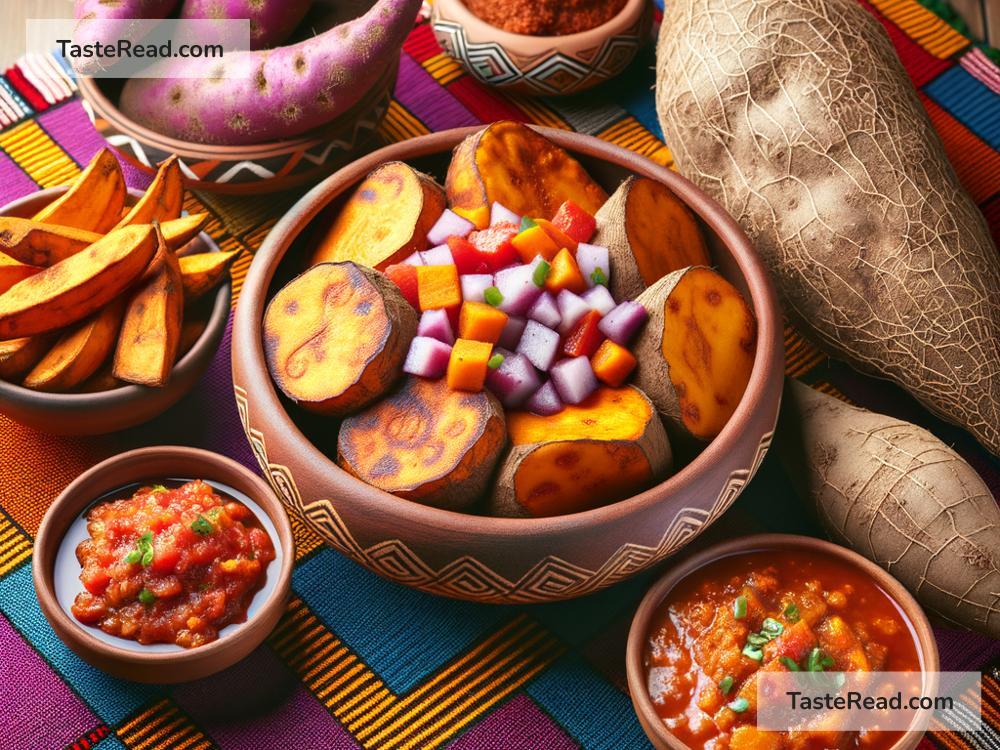The Role of Yams in West African Culinary Traditions
West Africa is home to a rich variety of foods, flavors, and culinary traditions. Among the many staples that form the foundation of West African cuisine, yams hold a special place. They are not just food; they symbolize cultural identity, tradition, and celebration for many communities across the region. In this blog, we will explore the role of yams in West African cooking, their cultural significance, and the many ways they are enjoyed in daily life.
What Are Yams?
Yams are starchy tuber vegetables that grow underground. They thrive in tropical climates like those found in West Africa and are a central part of the region’s agriculture. Yams should not be confused with sweet potatoes, even though both are tubers and are sometimes mislabeled in other parts of the world. True yams are larger, have rough, scaly skin, and their flesh is white, yellow, or purple, depending on the variety.
In West Africa, yams have been cultivated for thousands of years. They are often grown in rural areas where families rely on them as a main source of food. Due to their versatility, nutritional value, and cultural importance, yams remain a staple ingredient in the kitchens of many West African households.
Yams as a Staple Food
Yams are incredibly versatile in cooking. They can be boiled, fried, roasted, pounded, or mashed. Their rich, starchy texture makes them filling and satisfying, and they can be eaten as part of breakfast, lunch, or dinner. The simplest way to prepare yams is by boiling or roasting them, served plain or with a sauce or stew. However, their real magic comes alive in the more elaborate dishes that highlight their flavor and texture.
One popular preparation is pounded yam, a smooth dough-like dish made by boiling yams and then pounding them in a mortar and pestle until they become elastic and soft. Pounded yam is often paired with rich, flavorful soups and stews, such as egusi (melon seed soup) or okra soup. It is a favorite meal for special occasions and gatherings, symbolizing abundance and hospitality.
Yams can also be fried into crispy yam fries or sliced thinly and turned into chips for snacks. Another traditional dish is yam porridge, where the yams are cooked with tomatoes, onions, palm oil, and spices to create a hearty and comforting meal. These are just a few examples of the endless ways yams are featured in West African cooking.
Symbol of Culture and Tradition
For many West African communities, yams are not just food—they hold deep cultural significance. They are a symbol of prosperity, community, and survival. Yams are celebrated in many traditional ceremonies, and one of the most famous examples is the New Yam Festival, observed by the Igbo people of Nigeria and other communities in the region.
The New Yam Festival marks the start of the harvest season and is a time to give thanks to the gods and ancestors for providing food. During the festival, old yams from the previous season are discarded to make way for the fresh harvest. It becomes a time of feasting, dancing, and offerings, where yams are the center of the celebration. This cultural event highlights the importance of yams, not just nutritionally but also spiritually, within the community.
Nutritional Benefits of Yams
Yams are not only delicious but also highly nutritious. They are an excellent source of carbohydrates, which provide energy for the body. Yams are rich in dietary fiber, helping with digestion, as well as essential vitamins like vitamin C, which strengthens the immune system. They also contain potassium, which supports heart health, along with other minerals needed for overall wellness.
For communities in rural areas where access to a wide variety of foods may be limited, yams are invaluable. Their ability to grow in challenging climates and their long shelf life make them an essential food source. Yams support food security in many parts of West Africa, ensuring families have access to nourishing meals even in difficult times.
A Source of Pride
The role of yams in West African culinary traditions goes beyond taste; it represents pride in heritage. Recipes involving yams are often passed down through generations, teaching younger family members how to prepare meals the way their elders did. Cooking yams is not only a daily activity but also a cultural practice that keeps traditions alive.
Across West Africa, people take pride in their ability to grow, cook, and serve yams. Whether enjoying pounded yam and soup with loved ones or celebrating the new harvest during the New Yam Festival, yams bring people together. They remind communities of their resilience, history, and connection to the land.
Conclusion
Yams are truly at the heart of West African food culture. They are versatile in cooking, deeply meaningful in tradition, and essential for good nutrition. Whether served simply as boiled yams or transformed into elaborate dishes for special occasions, yams have a way of bringing people together, celebrating abundance, and expressing cultural identity.
Next time you see yams at the store or hear about them in a conversation, think about their special role in West Africa. They are more than just tubers; they are a staple that carries history, tradition, and the flavors of a vibrant region.


